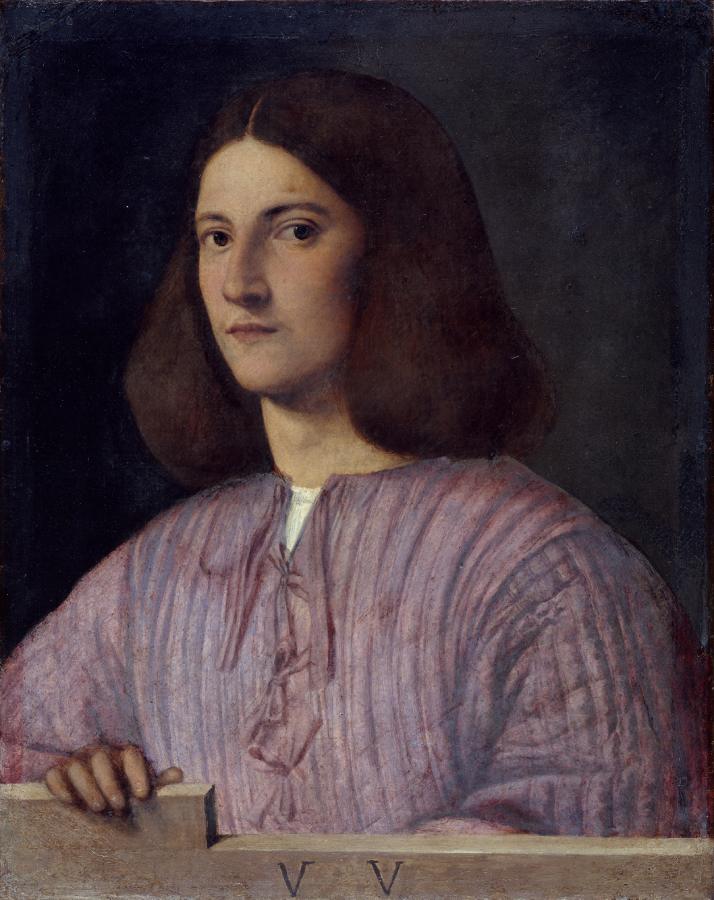Giorgione (c.1477-1510)
Ritratto di giovane, Ritratto Giustiniani (Portrait of a Youth)
early 16th century
Oil on canvas, 59.2 x 47 cm
Gemäldegalerie, Berlin
SHELFMARK / INSCRIPTION: V V
Until 1884, the Portrait of a Young Man was found in the Giustiniani Collection in Padua, and was known for this reason as the Giustiniani Portrait. From 1884 until 1891, it was owned by the art historian Jean Paul Richter, who attributed it to Giorgione, and who sold it to Wilhelm von Bode in 1891. It is not among those works by Giorgione that can be authenticated on the basis of inscriptions, source materials, or documentation, but nonetheless belongs to the small core of works that are accepted by scholars, virtually without exception, as coming from the artist’s own hand. Very few portraits are found among this group of works: the Laura in Vienna (Kunsthistorisches Museum; inscription on the reverse with the date 1506), the Portrait of an Old Woman in Venice (Gallerie dell’Accademia), the Giustiniani Portrait, and the somewhat less prominent male Terris Portrait in San Diego (Fine Arts Gallery; inscription on the reverse the date 15[1]0).
The sitter, depicted as a half-figure, appears against a dark background and behind a stone balustrade, on which he rests his right hand. The upper body is rotated almost imperceptibly away from a frontal position, and the face is shown in a three-quarters view. His gaze is directed toward the viewer. The young man wears a pale violet, quilted garment that closes with bows in the front. The uppermost bow has come undone, allowing the white shirt to show. His self-assured expression, the cool gaze that confronts the viewer from the corners of the sitter’s eyes, the well-proportioned classical forms, and the gently overcast, melancholic atmosphere that suffuses the image distinguishes it from slightly earlier portraits from the late 15th century by artists such as Antonello da Messina and Giovanni Bellini. The motif of the hand resting on balustrade is not Venetian, and could have been derived from Netherlandish models, for example the portraits by Memling which Giorgione may well have seen in Venetian collections. It may instead have been inspired by Leonardo‘s works. In this work, Giorgione has accomplished the transition toward the High Renaissance. In its classical harmony, it is comparable to works by Raphael. This portrait type would become decisive for the young Titian, and for artists who emulated Giorgione, such as Cariani.
The inscription “V V” on the stone balustrade was actually added later, but very likely reproduces the original initials. It has been interpreted variously, most recently as “Virtus Vincit”, but also as “Vivo Vivus”, the latter by analogy with inscriptions on Roman portraits and tomb monuments. This explanation has met with some acceptance, but has also been called into question. The dating of this work is controversial. Pignatti (1978), Pallucchini (1981), and others have dated it to circa 1506, and hence roughly contemporary with the Laura. C. Hornig (1976) dates it to 1500/01, and A. Ballarin (1978/79) has even proposed a date of 1497/98. D. Rosand (1978) regarded this picture, wrongly, to be by the young Titian (this view is shared by Joannides 2001). (Gemäldegalerie)
